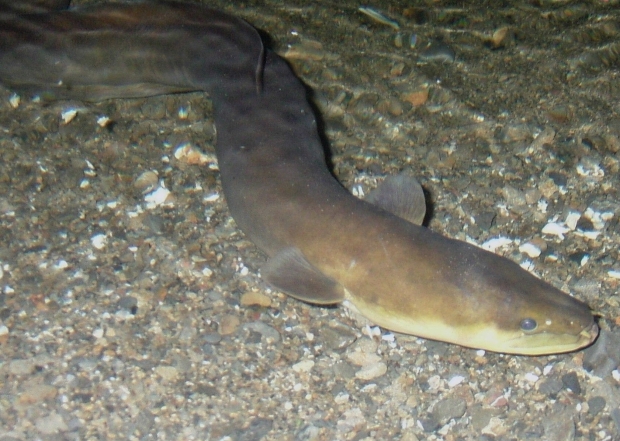Freshwater eels of the genus Anguilla have been studied for many decades, especially because of their high demand for consumption in Japan. All 15 species within this taxonomic group are catadromous, by which they spawn in oceanic environments and then the larvae disperse and migrate into freshwater reaches. They will remain in these freshwater habitats anywhere from 3-30+ years (depending on sex and latitude) before migrating back to their oceanic spawning location. Through the use of mitochondrial cytochrome b (a fairly conserved gene), the authors looked to determine phylogenetic relationships and discern the pattern of dispersal among 8 Anguilla species through the use of paleo-geography and paleo-circulation. Anguillid eels are believed to have originated near Indonesia, from which there is also the greatest diversity of species in the genus. It appears that the temperate American (A. rostrata) and European eels (A. anguilla) are most closely related to the tropical African long-fin (A. mossambica) and Australian short-fin eels (A. australis). The authors pose that the European and American eels would have diverged from the other species by migrating through the Tethys Sea Corridor c. 25 – 30 million years ago. In combination with the timing of divergence in the phylogenetic analysis, the authors claim that their Tethys Sea Route hypothesis is supported.
While not part of this paper, another study published 7 years later (Minegishi et al., 2005) using all 15 Anguillid species argue that this method of dispersal to the Atlantic basin could not have been possible. To read on this further, here is the link. – Josh
- Article – Evolution of freshwater eels of the genus Anguilla: a probable scenario
- Citation – Tsukamoto, K., & Aoyama, J. (1998). Evolution of freshwater eels of the genus Anguilla: a probable scenario. In Fish biology in Japan: an anthology in honour of Hiroya Kawanabe (pp. 139-148). Springer Netherlands.
- Presenter – Josh, Ecomorphology and Comparative Physiology Lab
- Breakfast – fruit, double chocolate muffins, and donuts
